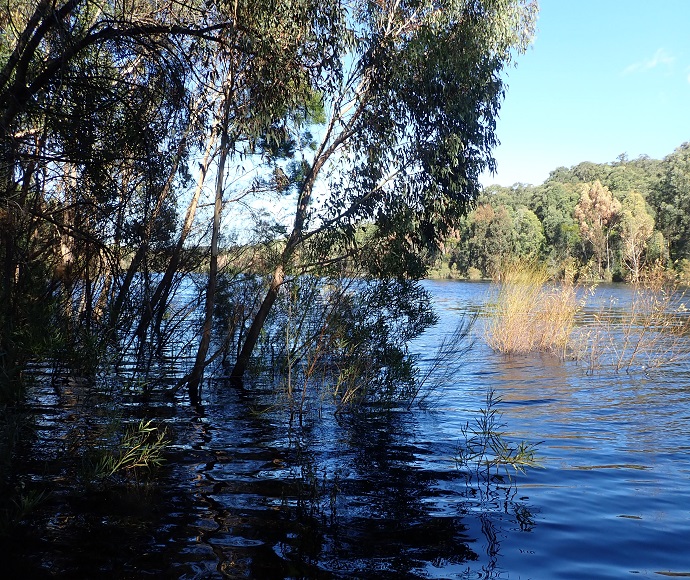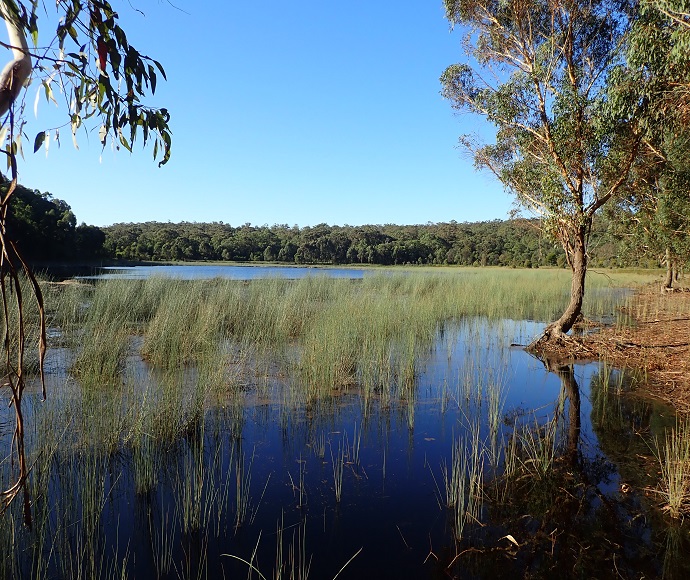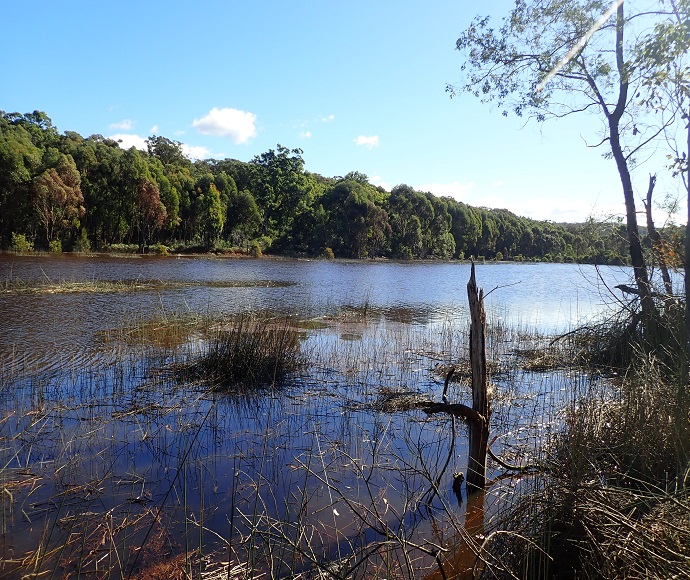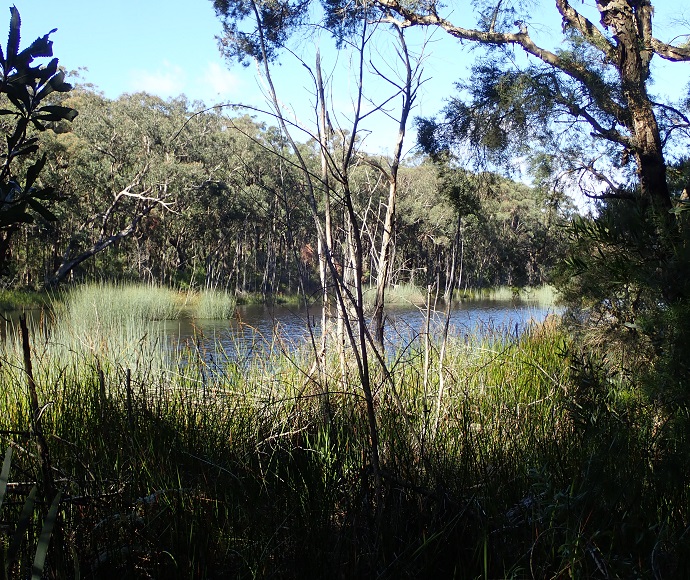The lakes are looking good!
After the March 2021 rains, Thirlmere Lakes are looking good, with possibly the highest water levels they have had for the last decade. Approximately 288 mm rain fell between 18 and 23 March 2021. This event led to rises in Lake Couridjah and Lake Nerrigorang levels to over 3 m, with Lake Werri Berri reaching almost 4 m. More subdued responses occurred in Lake Gandangarra and Lake Baraba. The nearby Stonequarry Creek also rose to ~4.9 m.
By way of comparison, there were 2 earlier major storm events prior to these March 2021 rain events: June 2016 and February 2020. During the June 2016 East Coast Low ~315 mm rain fell in 2 days between 4 and 5 June 2020, with Stonequarry Creek rising to ~8.75m that led to flooding in Picton. In the February 2020 rain event, ~303 mm rain fell in 3 days between 7 and 10 February 2020, with Stonequarry Creek rising by ~6.3m.
Thirlmere Lakes water levels
Each rainfall event was unique in its impact on lake levels and the response of the lakes is a function of both the intensity and duration of rainfall and catchment runoff processes. The graphs of rainfall and lake levels from data available on the WaterNSW Real Time Website highlights these differences: see Water levels in Thirlmere Lakes, May 2021 (JPG 2MB).
Another successful Science Day
On 16 June 2021, the Thirlmere Lakes Research Program presented the results from 3 years of research from collaborators from University of Wollongong, UNSW, ANSTO, Royal Botanic Gardens, and the department's Water Wetlands Coast Science Branch. Presentations included results of lake water balances, underlying geology, lake ages and sediments, surface-water groundwater interactions, lake chemistry, and lake ecology.
The Community Science Day has been running annually since 2018 as a way of communicating the progress and results of the research, as well as inviting feedback and engagement of the community stakeholders. The event was held at the Picton Bowling Club, with representatives attending from Wollondilly Council, Friends of Thirlmere Lakes, Council’s community consultative committee, WaterNSW, Macquarie University, NPWS, Greater Blue Mountains World Heritage Advisory Committee, and consultants.
While the full technical and summary reports from each of the 5 projects will be delivered in the coming months, the key findings so far are that climate variability is the major driver for water loss from Thirlmere Lakes and the system is particularly sensitive to variations in rainfall and evaporation.
The Thirlmere Lakes Research Program is a genuine example of collaboration and engagement alongside our university research partners, NPWS colleagues, local indigenous elders and community groups such as the Friends of Thirlmere Lakes.
Some feedback responses from attendees include:
- 'My knowledge became more comprehensive.'
- 'Each research project played an important role and improved understanding.'
- 'My knowledge base has increased exponentially.'

Research being presented at Community Science Day
Citizen scientists monitor and ground truth common wetland vegetation
Thanks to the Citizen Science Program and the Water Wetlands Coast Science Branch, the Friends of Thirlmere Lakes now have 4 dedicated devices that they can continue to monitor and ground truth the common wetland species, and record frogs in Thirlmere Lakes.
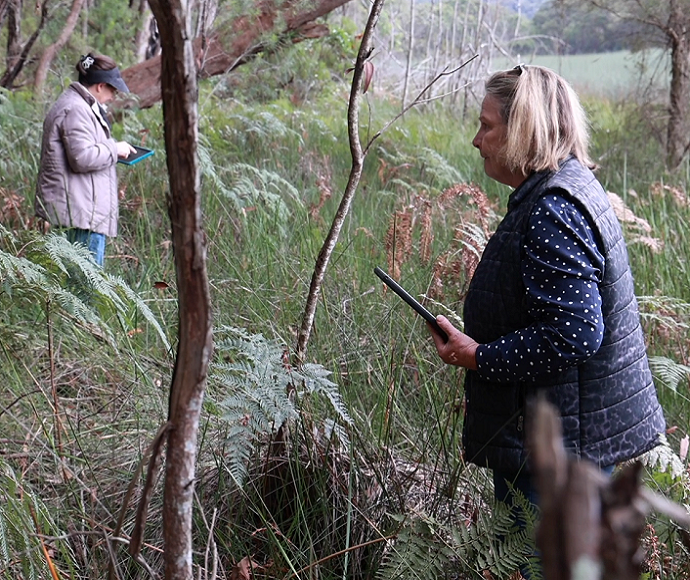
Dedicated devices help citizen scientists monitor wetland vegetation.
Genetic sequencing confirms that Lepironia articulata (grey sedge) in Thirlmere Lakes is unique
It was unclear whether Lepironia articulata, commonly known as grey sedge, was capable of reproducing through seed as it did not germinate from seed bank studies done in 2019. Hence, a genetic investigation of Lepironia was conducted, focusing on the populations at Thirlmere Lakes, Gandangarra, Werri Berri, Couridjah, and Nerrigorang, as well as comparative observations from 8 other sites along the NSW coast up to Byron Bay.
Results show that Lepironia articulata from Thirlmere Lakes is genetically distinct from other populations in New South Wales. Within Thirlmere Lakes the genetic variability is low compared to those within other NSW populations and, despite this, some genetic distinction between the lakes exists, with the highest genetic diversity at Lake Werri Berri whereas the lowest was at Lake Nerrigorang.
Where to next?
Final reports from the Thirlmere Lakes Research Program are being prepared for publication and we are aiming to make them all available on the department's website.
